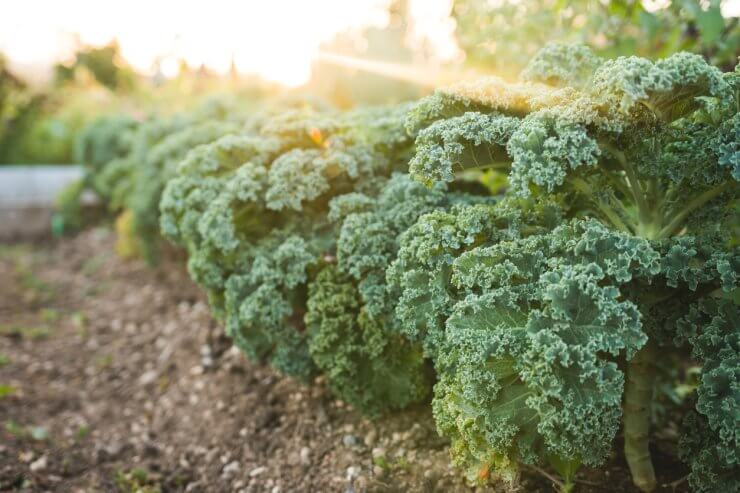
Kale plants growing in the sunlight
Kale likes a full day of sun—six to eight hours. Some varieties might do OK in partial shade, especially if you get some really hot days during the summer (but you can always use a shade cloth). Remember, kale is a cool-weather-loving crop. That’s why you have spring and fall plantings: to avoid the heat of summer.
Kale likes loamy, well-drained soil. While it likes regular watering, it doesn’t like getting waterlogged, so make sure your soil has good drainage.
Kale generally prefers a soil pH ranging from 6.0 to 7.5. If you don’t know the makeup of your soil, including its pH, get your soil tested. Avoid the heartbreak of guesswork and the chance of a failed crop. Local extension centers will do soil tests for you for a nominal fee. Just find the extension center near you and follow the directions for taking soil samples and sending them in. This, clearly, is something to do in the off season, well before you need to plant. Once you have a clear understanding of your garden soil composition, you can make better gardening decisions.
Yes, there are gizmos you can buy at the garden shop or hardware store, but they’re nowhere near as accurate as a real laboratory soil test. Take the time to do it. Your garden will thank you.
Have you grown kale yet? Have you had your soil tested or did you do it yourself? Please tell us your tips and tricks for growing great kale!


 Previous
Previous

